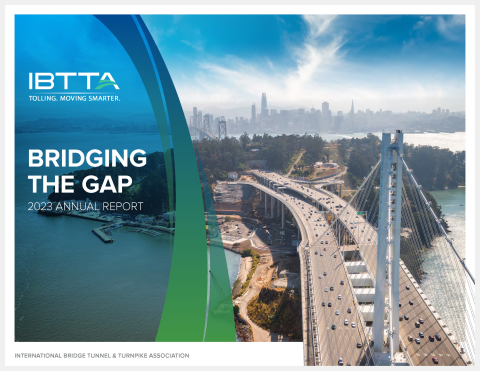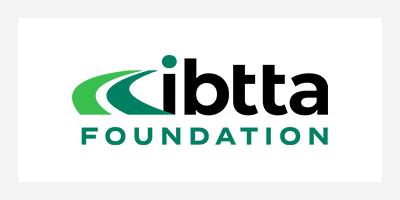- Home
- IBTTA Insights
- Why the FCC Should Deny the Petition to Reorganize the Lower 900 MHz Band
Stories
Why the FCC Should Deny the Petition to Reorganize the Lower 900 MHz Band


On August 6, 2024, the Federal Communications Commission (FCC) sought public comment on a petition from NextNav to reorganize the 902-928 MHz band (the Lower 900 MHz band). This band is crucial for U.S. electronic tolling systems. The International Bridge, Tunnel and Turnpike Association (IBTTA) has formally opposed the proposal, highlighting potential severe disruptions to the current diverse operations using this spectrum, including electronic tolling.
NextNav aims to deploy a high-power 5G and terrestrial positioning, navigation, and timing (PNT) network. Their proposal includes reallocating the spectrum into two contiguous bands: 902-907 MHz for uplink and 918-928 MHz for downlink. This change would cut the spectrum available for tolling by at least 20%, potentially causing significant interference and operational issues for U.S. toll systems.
Overwhelmingly, IBTTA members have expressed concerns about degraded performance of systems, ongoing costs of mitigation measures, risks of revenue loss, and effects of diminished customer satisfaction and confidence. Other concerns are about the constraints of locating new future tolling sites and limited competitive access to much of the band through a nationwide license to a single commercial entity.
Here’s why the FCC should deny this petition:
Mischaracterization of the Band’s Use
NextNav inaccurately describes the band as "largely underused." In reality, this band supports numerous applications including electronic tolls, vehicle access and traffic management, railway car monitoring, and more. Both licensed and unlicensed devices thrive in this band, supporting a wide range of applications, including electronic tolling; automated commercial vehicle clearance; vehicle access and traffic management; railway car monitoring; warehouse equipment controls; and access control at parking lots, airports, and residential communities. These technologies operate alongside unlicensed devices in the band, which have also thrived to create a vibrant network of applications, such as baby monitors, utility meters, wireless speakers, home security systems, and a variety of Internet of Things (“IoT”) devices supporting consumers, industry, healthcare, military, and government.
Impact on Governments and Motorists
U.S. toll operators use about 120 million electronic toll tags read at tens of thousands of tolling points on American roads. NextNav’s proposal threatens to disrupt these systems, affecting millions of drivers and billions of transactions. The NextNav proposal risks significant harmful interference with motorists’ toll payments, affecting tens of millions of drivers, billions of transactions, and tens of billions of dollars in public toll revenue crucial for transportation funding and bondholder commitments.
No Evidence of Feasible Coexistence Solutions
Toll technology experts have found that NextNav’s proposal poses significant risks to electronic tolling operations that will be virtually impossible to mitigate without significant performance degradation. The proposed changes contemplate much higher-power base station transmitters than those in use today with over 600 times the levels existing for NextNav’s current operations. This would require much larger separation distances than those evaluated previously, which ranged from 0.34 miles to 1.07 miles from toll collection locations. The new system would introduce new high-power handset transmitters in vehicles, which present a completely new interference risk to toll tags in vehicles.
Degraded System Performance and Risks to National Toll Interoperability
Electronic tolling systems rely on the entire available spectrum to operate efficiently. Multiple frequencies are used to ensure interoperability among three national protocols and accommodate multiple simultaneous tolling transactions at each toll site. At highway speeds, open-road tolling systems have little margin for error to cycle through three protocols, successfully read a transponder, and assign it to the correct vehicle. Today’s tolling systems require all the available spectrum to complete a single read within contractually required 99.95% accuracy. Reducing this spectrum limits the system’s ability to quickly read multiple protocols and process transactions accurately. This could lead to missed reads, increased reliance on less accurate collection methods, higher transaction costs, billing errors, and reduced revenue for governments. If the business case for multi-protocol readers falls into question, the significant progress toward the Congressional goal of national electronic toll interoperability may slow down.
Infeasibility of In-Band Retuning
In addition to degraded performance already noted, the spectrum lost due to proximity to high-power transmissions makes in-band retuning impractical. The Lower 900 MHz Band lacks the necessary spectrum to provide an effective guard band against high-power services.
Challenges of Relocating Tolling Operations
NextNav has not proposed any viable alternative spectrum bands for electronic tolling because no other readily available spectrum options exist. Options below 512 MHz have bandwidth limitations, and the 5.9 GHz band is reserved for vehicle safety applications. Some applications important to toll and other highway operators (i.e., Automatic Vehicle Identification deployments at weigh stations) simply could not be effectively deployed using spectrum with inferior propagation characteristics. Even if there were a readily available alternative band for electronic tolling, any relocation efforts would be so substantial, costly, time-consuming, and disruptive to consumers, businesses, and public and private toll operators that they would be practically impossible. New equipment for motorists, roadside equipment replacement, new software and hardware development, and testing/certification would have cost implications for toll agencies and consumers. The high transponder adoption achieved over decades and consumer confidence in a well-known and proven system would be at risk.
Constraints on Future Tolling and Road Pricing Locations
Even if a high-power network operator were able to protect existing tolling deployments by creating exclusion zones, the proposed high-power network would foreclose important future electronic road pricing options. Additionally, the growth of future base stations for a high-power network and the number of users over time would require continual testing and retuning of electronic pricing equipment that would represent significant expense and disruption to ongoing toll operations. At a time when all levels of government are seeking opportunities to diversify transportation revenue opportunities and replace declining gas tax revenue, future deployment flexibility is a paramount public policy need. Beyond traditional tolling, the constraints of the NextNav proposal will limit the ability to site and deploy new priced managed lanes and urban congestion pricing options that are growing in popularity and interest.
Other Spectrum Options Exist for the NextNav PNT System
NextNav’s focus on the Lower 900 MHz Band overlooks other available spectrum options that could support their PNT system. Bands like 600 MHz, 700 MHz, and 850 MHz are already standardized for 5G and would likely offer a more cost-effective solution by leveraging existing infrastructure.
Spectrum Policy and Management: Public Interest vs. Commercial Gains
The primary justification for the NextNav new band plan centers on the fact that it cannot operate an economically viable standalone terrestrial PNT service in the Lower 900 MHz Band. NextNav’s proposal to lease more than half of the Lower 900 MHz Band to mobile carriers as a means to subsidize a terrestrial PNT network is an inefficient use of the spectrum and provides a financial windfall to a single commercial entity. This all comes at the expense of impacting electronic toll operations that represent millions of public users, while risking billions of dollars of public investment and public revenue.
IBTTA remains committed to protecting the radio frequency spectrum that has culminated in tremendous benefits for American mobility, infrastructure, and motorists for more than forty years. We will be vigilant in defending the use of the spectrum to ensure that electronic tolling and road pricing remain a fast, safe, reliable, smart, economical, and green way to travel, while serving vital public interests. We will continue to advocate for spectrum policies that ensure Americans benefit from transportation system deployments without disruption and high costs.
Stay up to date by visiting IBTTA’s webpage on this topic.

Mark Muriello is IBTTA’s Vice President of Policy & Government Affairs. Mark has a distinguished record of accomplishment in highway operations, tolling, finance, transportation planning, and policy. Mark advocates for tolling and road pricing interests at the federal, state and local levels of government, and works with a a comprehensive array of industry organizations and stakeholders. Mark actively leads IBTTA’s agenda in government affairs, policy, lost revenue recovery, sustainability and reliance, climate action, and alternative transportation revenue sources.
Mark has more than four decades of experience in transportation and public finance, covering tolling and highway operations, bridges, tunnels, rail, bus, and marine terminal facilities, as well as in the electric utility industry. As the former Deputy Director of Tunnels, Bridges and Terminals for The Port Authority of New York and New Jersey, Mark oversaw the operations, maintenance and planning for the agency’s six tunnels and bridges and two interstate bus terminals that connect the New Jersey and New York City. Mr. Muriello served on the International Bridge, Tunnel and Turnpike Association’s Board of Directors while at the Port Authority and in a leadership capacity in a number of industry and national transportation organizations, including the E-ZPass Group, the Transportation Research Board, the OmniAir Consortium, and the Eastern Transportation Coalition.
Joining IBTTA connects you to a global community of transportation professionals, offering unmatched opportunities for networking, knowledge-sharing, and collaborative innovation in the tolling and transportation sector.
Follow IBTTA on social media for real-time updates on transportation trends and collaborative opportunities.





